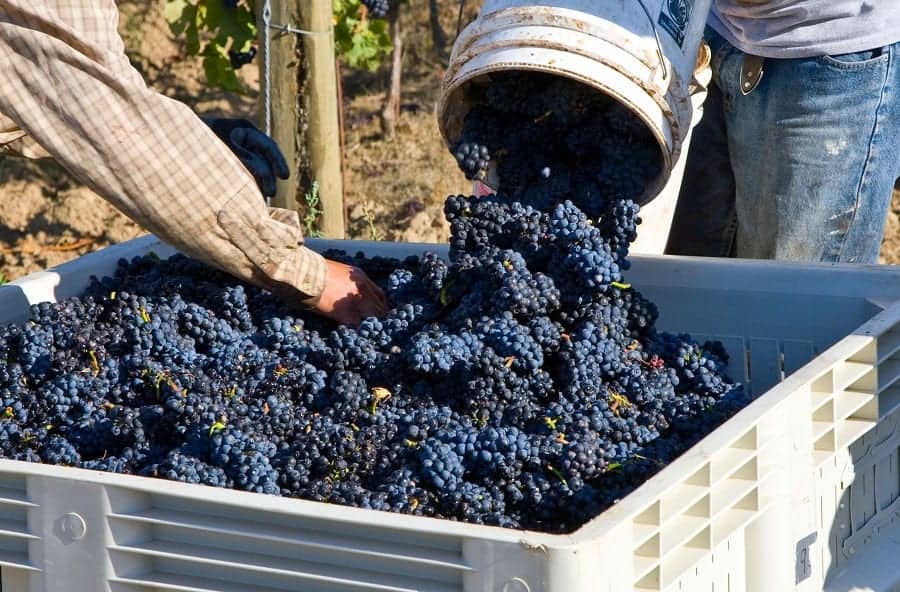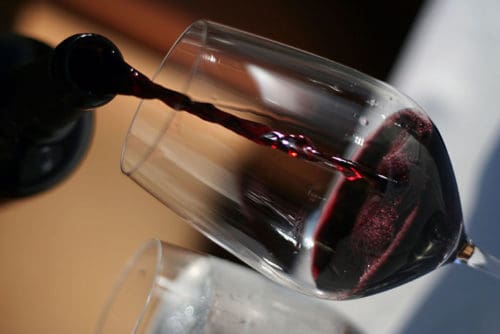What is a Fortified Wine?
A fortified wine is simply a wine that has had a distilled spirit added to it. This is done to typically achieve at least one of several possible goals: to strengthen the wine, to preserve the wine, and/or to halt fermentation, resulting in a sweeter, stronger wine.
Adding more alcohol to a base wine stops the fermentation process because this addition will kill off the yeast.
Once the yeast cells (which convert sugar to alcohol) are dead, any residual sugar they didn’t convert remains in the liquid. This ultimately results in a sweeter, more alcoholic end product.
To “Fortify” a Wine is to Make it Stronger
Fortification is a wonderfully versatile word to use to describe this category of wine. It describes the protection and preservation of the wine, in addition to describing a degree of enhancement and strengthening. More all-encompassing, to “Fortify” something means to change and build on its base structure.
RELATED: The Best Things to Do When Visiting Porto Portugal
Fortifying a Wine Allows for Endless Flavor Possibilities
Fortifying a wine doesn’t just make it stronger, it also can bring more flavor nuances to the table. Using different concentrations of base wines from different grapes and blends, stopping fermentation at varying degrees of residual sugar content, adding different styles of distilled spirit to stop fermentation, aging the wine in different styles of oak and aging the wine for different lengths of time all play a big part in affecting the final product’s outcome. Think of there being many different variables in an equation, resulting in an innumerable number of answers.
There Are Several Styles of Fortified Wine
Fortified wines are produced all over the world, but there are 8 common styles that are most recognized in this category. The most famous fortified wine is undoubtedly Port. However, Sherry, Madiera, Vermouth, Marsala, Mistelle, Moscatel de Setúbal and Commandaria are all also relatively well-known.
Different Grapes Are Used to Produce Various Styles of Fortified Wine
Not all fortified wines are created equal, and the grape variety used to make the base of any particular fortified wine is big determinant in overall flavor. The dominant grape typically used to make Port is Touriga Nacional. But many others are often used when crafting the wine in a blended format. There are too many for us to discuss in this article, but some wines, such as Sherry, are made from only one grape. Other styles of Fortified Wine, such as Madeira, can be crafted from blends of as many as 5 different grape varieties.
There Are At Least 6 Different Styles of Port
Port is produced is in a variety of styles, but typically it all begins with a blend of red grape varieties residing within Portugal’s Douro Valley. How Port is matured overtime, determines ultimately what the style will be.
RELATED: Itinerary for Exploring Porto Portugal and Beyond
When shopping for Port, look for Ruby Ports — the lowest tier of quality, these wines are typically non-vintage, simple and fruity. Reserve Ruby Ports are aged longer, and tend to be of better quality. LBV or Late Bottle Vintage Port’s are single-year Port’s with black and red fruit flavors. Vintage Ports are high-quality wines only crafted in the best years, with lasting aging potential. Tawny Ports and Reserve Tawny Ports are lighter in color and style, but err more on the side of caramel and prune flavors.
There Are At Least 4 Different Styles of Sherry
Sherry is produced in Spain, near Jerez de la Frontera in the Spanish countryside. It can vary dramatically in flavor depending how it’s aged and produced. The 4 well-known Sherry styles include Fino, Amontillado, Oloroso and Pedro Ximenez. Production of each style is complex, which we will discuss in a future article.
Fino Sherry is generally best when consumed young, and has strong bread and citrus almond notes and an alcohol intensity of about 15%.
Amontillado Sherry is a more oxidized and intense style Sherry. They can be produced in both dry or sweet fashion with nutty flavors, and are commonly deep amber in color. Look for Medium on the label of an Amontillado Sherry to try the sweet version.
Oloroso Sherry is a stronger Sherry still. At 18% ABV, it is a heavily oxidized wine, with strong hints of cracked kernel and leather-esque flavors. These wines are also produced in both dry and sweet formats, however, sweet Oloroso is labeled as a Cream Sherry.
Pedro Ximenez is a favorite style of sweet sherry and at the same time also a versatile grape variety. These wines are produced from sun-dried grapes, giving way to a high viscosity liquid (think syrup), with notes of figs, candied apple, and dried fruit.
Sherry is Stored in Someone’s Butt
We’re not kidding. Sherry base wine is aged in oaken casks referred to as “butts.” As it ages in these butts, the base wine is continually blended over time with the addition of both younger and older wine. This not only has a dramatic effect on the resulting flavor, but it also ensures a certain consistency in Sherry’s maturity for any particular style. The butts used in the maturation process impart virtually no flavor on the wine, most of it comes from this unique aging process, called the solera system.
Madeira Was An Accident
Madeira is perhaps my favorite style of fortified wine — because of its story. Not far off the coast of Portugal lies the island of Madeira. This beautiful little slice of heaven has long produced wine for centuries, but only by accident did it produce the style of wine now known today as “Madeira.”
Centuries ago, when wines were ready to be distributed to consumers, they were packed deep in the hulls of ships and sent out to various ports of call. During these often lengthy sea voyages, the wine would heat up in the belly of the ship. In time, it was found that the heating and inevitable cooling of these wines evolved them in such a way as to create a very unique flavor.
Almost all Madeira is high in acidity and has the potential to age very well. These wines are produced both dry and sweet, with common flavors of toffee, coffee, caramel, kernel and smoke.
Serving Fortified Wines
Most styles of fortified wine should be served slightly chilled. About 20 minutes in the average fridge should bring the temperature to between 60 – 62 degrees Fahrenheit. Try to use smaller wine glasses for sherry.
Food Pairing Fortified Wines
Because of their typically sweet and intense style, fortified wines pair wonderfully alongside spicy and/or salty snacks and dishes.
Because they’re also sweet, these wines work perfectly with most dessert dishes, from chocolate cake to strawberry crème brûlée.
You are reading “11 Delicious Facts About Port Wine & Fortified Wine” Back To Top
port wine, where is port wine made, port from Portugal, fortified wine production: wine education
If you enjoyed this guide, make sure you register to become a Winetraveler for free! You’ll get access to all of our content and interact with other Winetravelers and for travel inspiration around the world. Be sure to follow along with us on Instagram as we continue to feature more exciting destinations.

